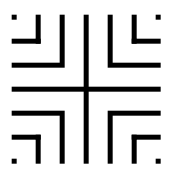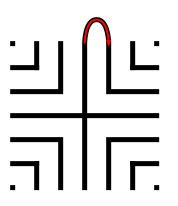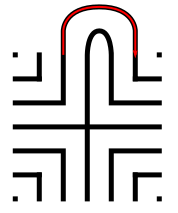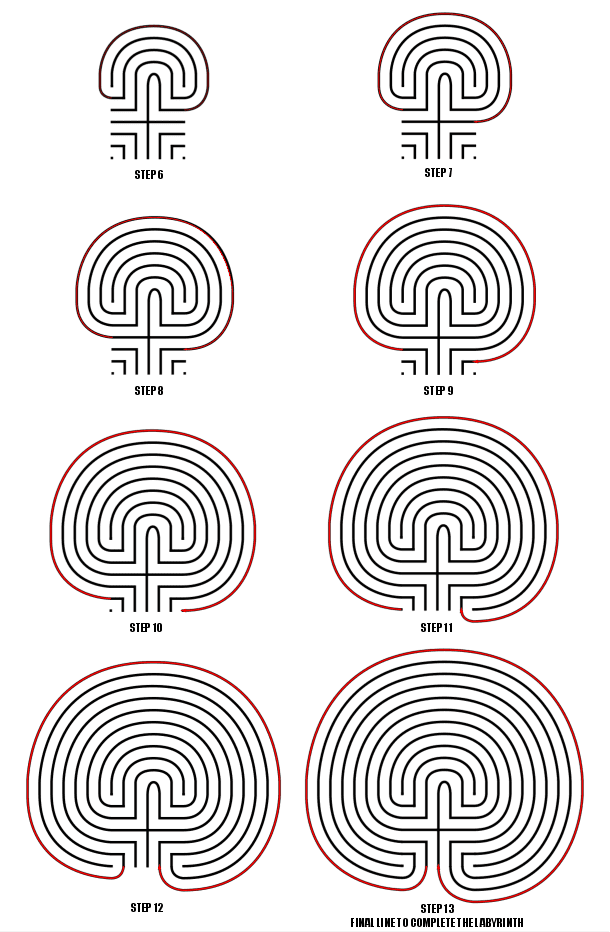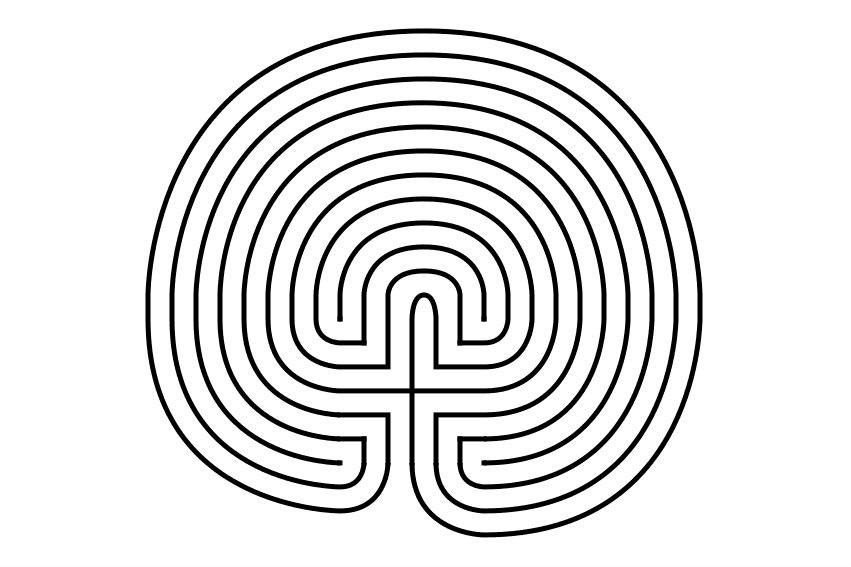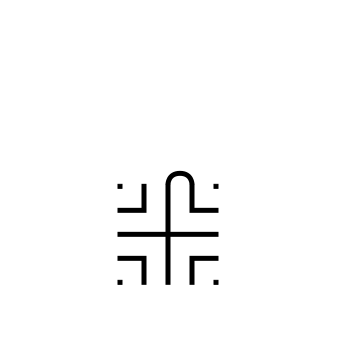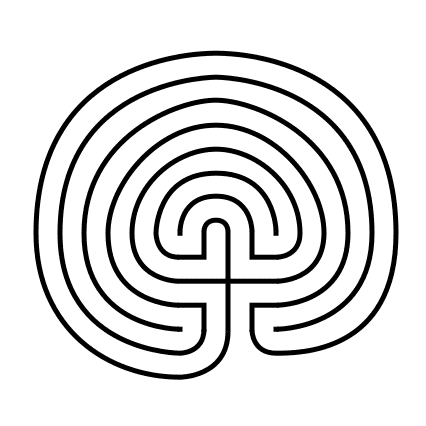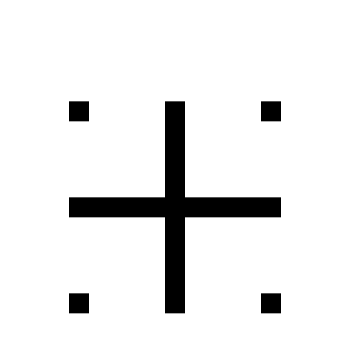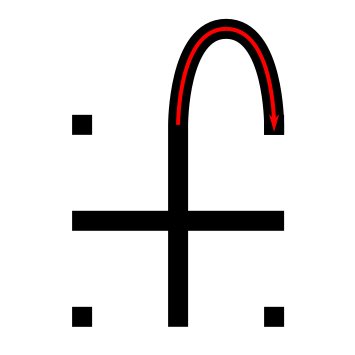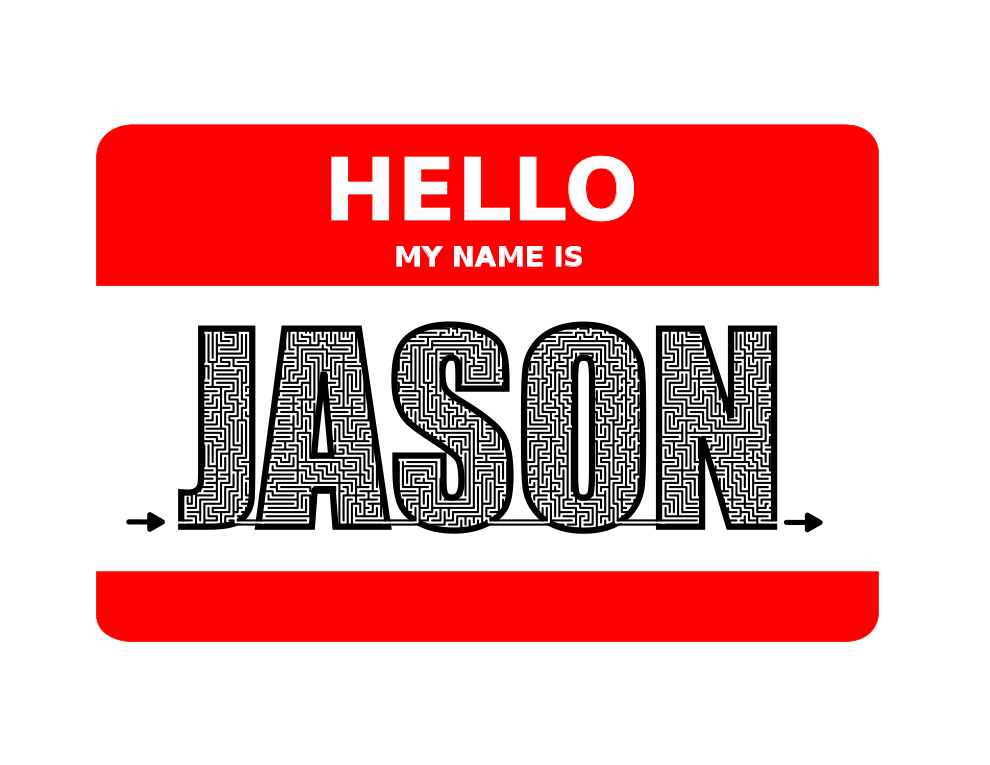Every section of the Doyoumaze website has a story. Today I tell you about the Name maze section of the website. (If you are just interested in HOW to make a maze of your name, I have that covered.) I thought people would enjoy seeing their name in maze form - a kind of personalized maze. If you want to do this on your own click on the link above, otherwise we continue on… Maybe it was my time in corporate America but I think these mazes would look good on a cubicle wall. And they are fun to make. I also thought they would make a nice gift. Print out a friends name and write a note thanking them for being amazing (or maybe a-maze-ing). Now the story of how I went about actually making the name mazes. Here were the stages I went through:
Stage 1 - Names of my Close Friends and Family
Initially I started out as anyone would making my close friends and family members names. That got me to 6 mazes….ok maybe a few more,. Let’s say about 25 mazes. I added these to the website and felt pretty good. Now if they visited my website I had the important people done.
Stage 2 - The Ten Most Popular Male and Female Names
I did a quick search for the 10 most popular names for Men and Women. This is where I found out the Top 10 Men’s names in the United States represent 23% of all Men’s names ( James, John, Robert, Michael, William, David, Richard, Charles, Joseph, and Thomas) and for Women the Top 10 represent 10.7% of all Women’s names (Mary, Patricia, Linda, Barbara, Elizabeth, Jennifer, Maria, Susan, Margaret, Dorothy). I thought it was interesting that the Men’s name database has 1200 different names while the Women’s name database has 4,275 names !!! I later realized this was partly because men have more standard name spellings than women (like Katherine & Catherine & Katharine & Kathryn).
At this point I could display all maze name images directly on the website (and not the name listings you see today).
Stage 3 - My LinkedIn Connections Names
I have approximately 460 connections on LinkedIn. I thought it would be nice to make a maze for each connection. The best part about this project was that I got to think about each person as I made their maze. The people I have lost touch with. My old co-workers from previous jobs. I have to admit, this was a very rewarding project simply because of this process. This project added 302 more unique names to the maze name section. I would like to thank the following names for being popular among my connections:
Michael and Michelle - 8 connections each
Brian, Rachel and Rick - 6 connections each
David, Greg, Jason, Jennifer, Mary and Richard - 5 connections each
Now, if you ask me to connect on LinkedIn you’ll have a much better chance if you have a (short) common name. Website wise this is where I had to take down the pictures of each maze name and use the name listing version you see today. Because once you have so many names, if you want the page to load quickly lots of images is not helping anyone.
Stage 4 - Close variations of Existing Names
If I make Richard, it is easy to make Ricardo. Debbie became Deb. Douglas became Doug. Frank became Fran. etc. Close variations added about 100 more name mazes to the portfolio.
Stage 5 - Top 100 Male/Female Names
I decided that with so many names done I wanted to see how many of the top 100 Men’s/Women’s names I had already mazed. The answer was 134. Since there were only 66 more names (out of the 200 names) that needed to be made I went ahead and finished all of them.
Stage 6 - Top 200 Male/Female Names
Well, I might as well keep going right……I added 132 more names (out of the 200) when this was complete. As I finished this up I found these statistics about how many US names I had covered with the project:
The top 200 Male names represent 72.5% of men’s names.
The top 200 Female names represent 58.2% of women’s names.
Plus I have 262 names not in the top 200 from the previous Stages 1-4. So I think I’m pretty well covered as a % of total US names. The final tally of name mazes ended up being 662…and growing. If you have a name I have not done yet, you can always request it here.
UPDATE:
Stage 7 - Top 300 Male /Female Names
I researched the next 200 overall names (thru #300) and I already had 52 of them on the site. That leaves 148 to make if I take this on, names like Agnes and Cecil. I completed this and along the way added in a few other similar names…+164 names…new total 826 !!!
Stage 8 - Regional names page - “The Land”
I decided to create a Cleveland names page. This added 57 additional names to the project, including some unique ones that everyone knows like LeBron, Kyrie, Zydrunas, Halle, Stipe, Urban, and Dolph. This is the first time I used colors other than black and white for these special edition name mazes. New total 883.
Stage 9 - Top European names
I went with Europe since they have names most closely related to our own but with nice variety. I used the top 10 lists I found online for Europe by country for both men and women. Not every name was done but this did add 161 new names and I broke the 1,000 barrier. You can thank Turkey for Zeynep and Slovenia for Zala. New total 1,044.
Stage 10 - Top Americas and Oceanic names
Kept with the International theme but felt like I needed to break it into parts. Again, like Europe I did not do every name in each top 10, just the most recognizable and any that appeared in multiple countries. I was very happy to add my first X name thanks to Mexico, Ximena. Haiti brought us Widelene and Peru gave us Milagros. I added 94 with this project. New total 1,138.
Stage 11 - Top African Names
I learned that South Africa has a thing for names like Blessing, Prince, Princess, and Faith. Also was able to add 4 “Y” names to the 6 I already had and another Z name. Overall Africa brought an additional 74 names. New total 1,212.
Stage 11.1 - National Bubba Day
National Bubba Day June 2nd meant an addition to the list, +1. New Total 1,213.
Stage 12 - Male names from Asia
Asia has such a wide variety of names I had to split it by gender. A mix of traditionally Muslim, Jewish and Asian names made this section varied as there was very little overlap between countries. There is also less overlap with traditional Christian names already on the site. We can thank China for short names like An, De and Yi. Our new first name alphabetically Aarav comes from India. Shout out to Pakistan for Zahid. And more “Y” Names, +6 from 10 before. Overall I added 126 additional names . New total 1.339.
Stage 13 - Female names from Asia
The second half of Asia added 108 new names. This included 2 Q’s, 5 X’s, 8 Y’s and 4 Z’s. I also added 13 names with dashes in them. Most of these names are ones I was unfamiliar with and they are all top ten in Asian countries….can’t imagine what an uncommon name is !!!! New total 1,447.
Stage 14 - Names from Movies
In an experiment to find more names to add to the website I decided to use the character names from movies I was watching until I generated at least 50 new names. I wondered how many movies I would need to watch before I hit 50. The answer was 24 movies !! Here are the movies I watched and the names that came from them:
The Sons of Katie Elder (1965). The Western starring John Wayne and Dean Martin brought us the names Bud, and Curley. And yes, at some point Curley was a given name, not a nickname.
Big Jake (1971). Another John Wayne western. More nicknames that were once given names - Pop and Buck.
The Gunfighter (1950). Gregory Peck Western about a gunfighter who isn’t looking for trouble, but always seems to find it. Names: Hunt and August.
The Westerner (1940). Western starring Gary Cooper that deals with homesteaders in the early days of the West. Names: Cole, Hod and Shad.
Lonely Are The Brave (1962). Kirk Douglas and Walter Matthau western. Names: Morey and Hinton.
High Sierra (1941). Humphrey Bogart is a gangster just out of prison doing what he knows best. Names: Red and Doc.
The Defiant Ones (1958). Tony Curtis and Sidney Poitier are escaped convicts on the run. Name - Angus.
Days of Wine and Roses (1962). Jack Lemmon and Lee Remick. Great drama film about an alcoholic marriage. 100% rating on Rotten Tomatoes. New names were Kirsten, Ellis, Rad and Dottie.
Night of The Iguana (1964). Richard Burton and Ava Gardner star in this John Huston drama that brought us the name Hank.
They Shoot Horses Don’t They (1969). Jane Fonda stars in this drama about a dance marathon contest during the Depression. Names: Rollo and Shirl.
A Woman is a Woman (1961). Jean Luc-Godard comedy starring Anna Karina. Name: Emile
Bloody Sunday (2002). Historical drama about the Irish protest that resulted in a massacre by British troops. Names: Eamonn, Bernadette and Gerry.
Lovers of The Arctic Circle (1998). Finnish movie about a mystery and a romance. Names: Alvaro and Aki.
Tyrannosaur (2011). UK film about a violent man searching for redemption. Name: Gurav.
Dark Places (2015). Charlize Theron stars in this drama/mystery film that generated a surprising 7 names: LIbby, Lyle, Diondra, Trey, Debby, Magda and Runner. I also added Dion from Diondra.
Reign of the Supermen (2019). Some animated DC Comics Superman. This was an easy way to get the names Lex, Clark and Dabney.
The Commitments (1991). Alan Parker movie about starting a band in Dublin, Ireland. Names: Imelda and Mickah.
Three Identical Strangers (2018). Documentary about identical triplets that were split up at birth unbeknownst to them. Names: Hedy, Elliot, Eddy, and Mort.
O Lucky Man ! (1973). Malcolm McDowell is a naive salesmen. Names: Mick and Monty.
Secondhand Lions (2003). Michael Caine, Robert Duvall and Haley Joel Osmant star in this drama/comedy about a boy spending the Summer with his 2 wierd uncles. Names: Garth and Hub.
Missing (1982). Outstanding political drama starring Jack Lemmon. 0 names.
Suddenly Last Summer (1959). Elizabeth Taylor and Katherine Hepburn star in this drama/mystery. 0 names.
Seconds (1966). John Frankenheimer Sci-Fi flic starring Rock Hudson. Great premise, nice movie, 0 names.
Adam’s Rib (1949). Comedy Romance starring Katherine Hepburn and Spencer Tracy. This is the movie that got me to over 50 new names !! Names: Kip, Beryl and Olympia.
So what is next for name mazes ? What is Stage 15 ? Here are the options I am considering:
1. The next 100 names for men/women
I need to research the next 200 overall names, 100 from each gender (both thru #400). Hopefully a nice number of them are covered already on the site.
2. MORE Top international names
Keep with International by doing the most popular names in the world.
3. More regional names like the Cleveland section
4. The uncommon letters
Search out names that start with uncommon letters like U, Q, X, Y, and Z
5. Maze the names of everyone I meet in a day
6. Pick a random sports roster and maze all names
Wondering what happened ? Well here’s my next name maze project update !
Have an idea you’d like to see ? Let me know in the comments.


